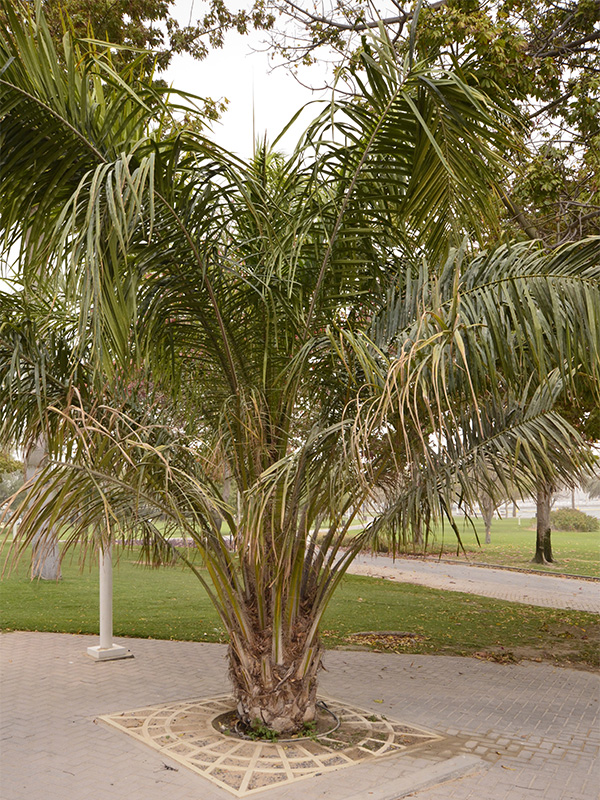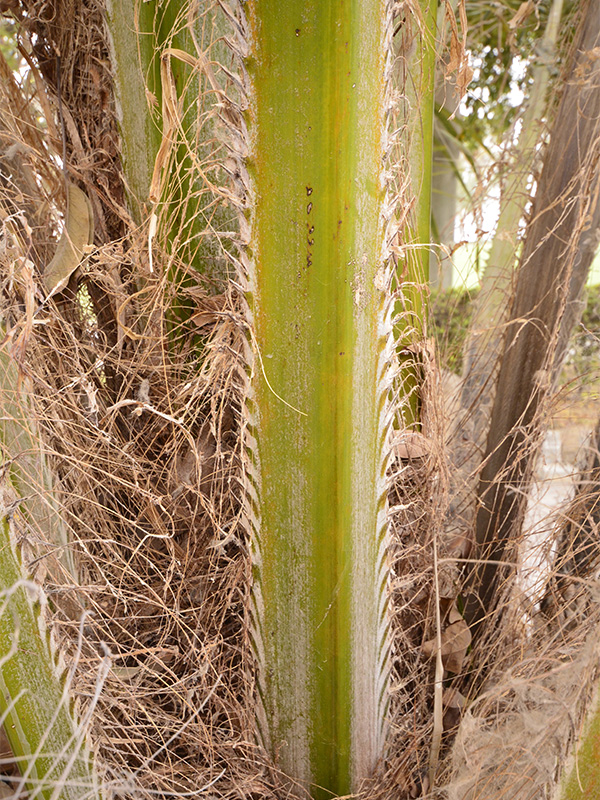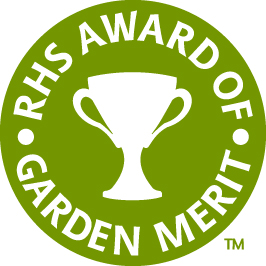
Tropicals, Woody > Butia > Butia capitata > Butia capitata
Butia capitata
Jelly Palm
Origin: Native to Argentina, Brazil and Uruguay.
| Family |
| Arecaceae |
| Genus |
| Butia |
| Species |
| capitata |
| Category |
| Tropicals, Woody |
| Type |
| Tree (evergreen) |
| USDA Hardiness Zone |
| 10 |
| Canadian Hardiness Zone |
| Requires cool season protection under glass. |
| RHS Hardiness Zone |
| H1c |
| Temperature (°C) |
| 5 - 10 |
| Temperature (°F) |
| 30 - 40 |
| Height |
| 4 - 6 m |
| Spread |
| 2 - 4 m |
Photographs
Description and Growing Information
Flowering Period
| Cultivation |
| Full sun in moist and well-drained soil. |
| Shape |
| Twisted and distorted. |
| Growth |
| Slow |
| Bark/Stem Description |
| The trunk is thick and stout. |
| Leaf Description |
| Feather palm pinnate leaves that arch inwards towards the trunk. |
| Flower Description |
| Flowers are large, appearing on auxilary or terminal racemes. |
| Fruit Description |
| Ripe fruit are the size of a large cherry. The fruit is tart and sweet with a flesh similar to a loquat but slightly more fibrous. |
| Colour Description |
| The fruit is yellowish-orange. The leaves are green. |
| Texture Description |
| The branches are rough. |
| Notable Specimens |
| Trewidden Garden, Penzance, Cornwall, England. Trebah Garden Trust, Mawnan Smith, Falmouth, Cornwall, United Kingdom. |
| Ethnobotanical Uses (Disclaimer) |
| The fruit is edible and tastes a mixture of pineapple, apricot and vanilla. The taste varies depending on soil conditions but can also have a mixed taste of apple, pineapple and banana. |


